This article was medically reviewed by Mark Ziats, MD, PhD. Dr. Mark Ziats is an Internal Medicine Physician, Scientist, Entrepreneur, and the Medical Director of xBiotech. With over five years of experience, he specializes in biotechnology, genomics, and medical devices. He earned a Doctor of Medicine degree from Baylor College of Medicine, a Ph.D. in Genetics from the University of Cambridge, and a BS in Biochemistry and Chemistry from Clemson University. He also completed the INNoVATE Program in Biotechnology Entrepreneurship at The Johns Hopkins University - Carey Business School. Dr. Ziats is board certified by the American Board of Internal Medicine.
There are 7 references cited in this article, which can be found at the bottom of the page.
This article has been viewed 79,866 times.
Your reusable earplugs seem like one of life’s simple pleasures. They block out the many loud and annoying sounds you don’t want to hear throughout the day. Earplugs can make you more comfortable as you enjoy swimming or get a good night’s rest. But, they work best when they are washed regularly. Clean earplugs protect the health of your ears.
Steps
Cleaning Your Earplugs
-
1Inspect your reusable earplugs, first. You are checking to see if your earplugs are torn, bent, or excessively dirty.
- Your earplugs can harden and become rigid if they are covered in a lot of earwax and skin oils from your ear canal. This loss of flexibility will prevent you from getting a good seal when you use your earplugs.[1] [2]
- Your ear canal connects your outer ear with your eardrum. It makes earwax, which is a mixture of shed skin cells, a little bit of dust, and a fat-like secretions from the glands in the canal. The secretions from the glands lubricate the ear canal and fight off infections from bacteria and fungi. [3] When you insert earplugs covered with stains and other materials, you run the risk of overwhelming your ear canal’s natural defenses with too much dirt and germs.[4]
-
2Throw away your damaged or dirty earplugs. Do not continue with trying to disinfect them. Buy yourself a new pair of reusable earplugs.[5]
- Reusable earplugs can be made from a variety of materials. The more common reusable earplugs are made from pre-molded silicone rubber, vinyl, other hypoallergenic synthetic rubbers, and foam covered in a special material or “skin”. These types of earplugs can be used more than once because they are very durable and long-lasting when washed properly. But, they are not indestructible and must be replaced.[6] [7] [8]
Advertisement -
3Have a hands-off approach. You want to keep your earplugs clean, but sometimes your schedule will not allow for the time it takes to wash them by hand. Clean your earplugs in the washing machine, the dishwasher, or boiling water. You still have to air dry them and store them in their case.[9]
- Keep track of your small earplugs. Put your earplugs in a fine mesh bags used for produce, close the bag with a rubber band, and wash them in the dishwasher.[10] You can put your earplugs in a delicates washing bag when you clean them in the washing machine.
- Be careful not to damage your earplugs.
-
4Treat your earplugs gently with a hand washing. Fill a bowl with a cleaning solution. The solution can be soapy water or hydrogen peroxide. Add a mild soap, like dish detergent, to warm water and mix until you see suds. Or, use undiluted hydrogen peroxide.[11]
-
5Soak your earplugs in the cleaning solution. Let them sit undisturbed in the soapy water or hydrogen peroxide for several minutes. You will know exactly how long your earplugs need to soak after a couple of cleanings.[12]
-
6Scrub your earplugs, gently, in new soapy water. Discard the old cleaning solution. It contains the dirt and grime you are trying to get off your earplugs. Remove any visible materials with your fingers, a soft cloth, or a soft brush, like a toothbrush.[13] [14]
- Buy a new toothbrush just for this purpose. A used toothbrush, even if it has been cleaned, will still have bacteria from your mouth on it.
-
7Rinse your earplugs with cold water. Move on to this step only after you have removed all of the dirt and stains with a thorough scrub. Do not leave behind any matter which may harden your earplugs; this may force you to discard them sooner than you want.[15]
-
8Wipe your earplugs with alcohol. Your earplugs have been disinfected. They should be soft and clean without any deformities or tears.[16]
-
9Air dry your earplugs in a clean place. Let your ear plugs dry completely before you use them. You can squeeze the ear plugs or pat them gently with a towel to get out some of the excess moisture.[17]
-
10Store your dry ear plugs in their case. It is a good habit to immediately return your earplugs to their case whenever you are not using them. This keeps your clean earplug protected from damage as well as any dust and dirt.[20] [21]
- Your reusable earplugs will last from a couple of weeks to several months. It depends on how often you use your earplugs, how often you clean them, what type of earplugs you buy as well as where and how you store them.[22]
Practicing Good Ear Hygiene
-
1Wash your earplugs after every use. This can be time consuming, but it is worth the effort. You decrease your chances of developing ear irritation or an infection from earplugs covered in earwax, skin oils, and dust.
-
2Do not share your earplugs with anyone. You are sharing whatever germs, earwax, and skin oils the other person has in her ear canal. This is another way you could develop ear irritation or an infection.[23]
-
3Think about using only disposable earplugs. You can throw away your earplugs after every use. This is a reliable way to make sure your earplugs are always in good working condition. But, you may end up spending more money this way, and it creates more waste.
-
4Do not use your earplugs all the time. When you keep them in for long periods of time, your earplugs stop the normal process of earwax being moved through your ear canal towards your outer ear. Take out your earplugs sometimes and let your ear canals “breathe.”[24]
- Your earplugs can push earwax deeper into your canal where it builds up and hardens. You may develop ear pain, ringing in your ears, irritation, infection, discharge and even hearing loss.[25]
-
5Do not clean and re-use disposable earplugs. A washing may cause your earplugs to degrade. They can no longer protect your hearing from loud noises or keep water out of your ears when you swim. Having earplugs that properly guard your ears is an important part of good ear hygiene.[26]
- Materials, like uncovered foam and soft wax, used in single-use or disposable ear plugs are not designed to be cleaned with soapy water or alcohol. If your disposable ear plugs are no longer soft and pliable, they cannot form a good fit in your ears.[27]
-
6Finished.
References
- ↑ http://www.earplugstore.com/reusable-ear-plugs.html
- ↑ http://www.ccohs.ca/oshanswers/prevention/ppe/ear_prot.html
- ↑ http://www.ncbi.nlm.nih.gov/pubmedhealth/PMH0072538/
- ↑ http://www.earplugstore.com/reusable-ear-plugs.html
- ↑ http://www.earplugstore.com/reusable-ear-plugs.html
- ↑ http://www.earplugstore.com/reusable-ear-plugs.html
- ↑ http://www.allearplugs.com/help-centre/how-to-care-for-your-ear-plugs.aspx
- ↑ http://www.earplugstore.com/reusable-ear-plugs.html
- ↑ http://www.wisegeekhealth.com/what-are-silicone-ear-plugs.htm
- ↑ http://www.thriftyfun.com/Washing-Small-Items-in-the-Dishwasher-1.html
- ↑ http://www.allearplugs.com/help-centre/how-to-care-for-your-ear-plugs.aspx
- ↑ http://www.allearplugs.com/help-centre/how-to-care-for-your-ear-plugs.aspx
- ↑ http://www.allearplugs.com/help-centre/how-to-care-for-your-ear-plugs.aspx
- ↑ http://www.ccohs.ca/oshanswers/prevention/ppe/ear_prot.html
- ↑ http://www.allearplugs.com/help-centre/how-to-care-for-your-ear-plugs.aspx
- ↑ http://www.allearplugs.com/help-centre/how-to-care-for-your-ear-plugs.aspx
- ↑ http://www.ccohs.ca/oshanswers/prevention/ppe/ear_prot.html
- ↑ http://www.mayoclinic.org/diseases-conditions/swimmers-ear/basics/definition/con-20014723
- ↑ http://www.allearplugs.com/help-centre/how-to-care-for-your-ear-plugs.aspx
- ↑ http://www.allearplugs.com/help-centre/how-to-care-for-your-ear-plugs.aspx
- ↑ http://www.earplugstore.com/reusable-ear-plugs.html
- ↑ http://www.earplugstore.com/reusable-ear-plugs.html
- ↑ http://www.allearplugs.com/help-centre/how-to-care-for-your-ear-plugs.aspx
- ↑ http://www.ncbi.nlm.nih.gov/pubmedhealth/PMH0072538/
- ↑ http://www.ncbi.nlm.nih.gov/pubmedhealth/PMH0072538/
- ↑ http://www.allearplugs.com/help-centre/how-to-care-for-your-ear-plugs.aspx
- ↑ http://www.allearplugs.com/help-centre/how-to-care-for-your-ear-plugs.aspx
- ↑ http://www.earplugstore.com/reusable-ear-plugs.html
About This Article
To disinfect your earplugs, start by letting them soak for several minutes in a small bowl, which you should fill with either undiluted hydrogen peroxide or soapy water made with dish detergent. After you've finished soaking the earplugs, use a new toothbrush and a fresh bowl of soapy water to gently scrub the remaining debris from your earplugs. Once they look fairly clean, rinse them in cold water, then wipe them down with alcohol and leave them out to air dry. In some cases, you may also need to squeeze the earplugs or pat them gently with a towel to remove excess moisture. Since moist earplugs can lead to irritation, pain, and infection, wait until your earplugs dry completely before using them again. For more tips from our Medical co-author, like how to know when to throw out your earplugs, keep reading!
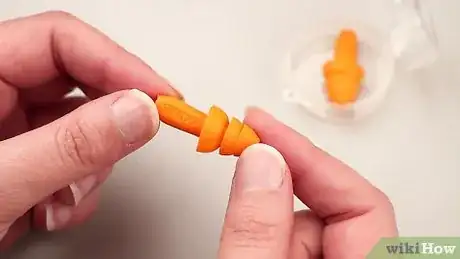
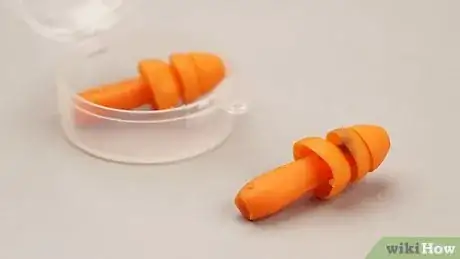

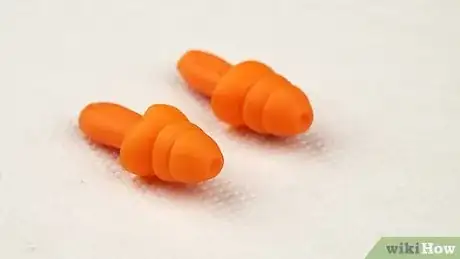
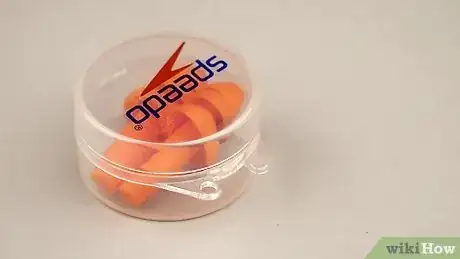
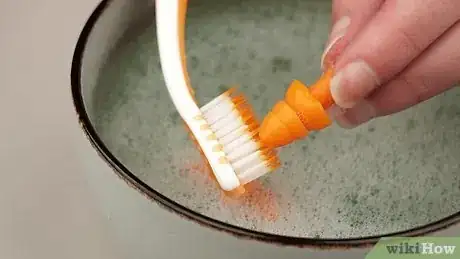
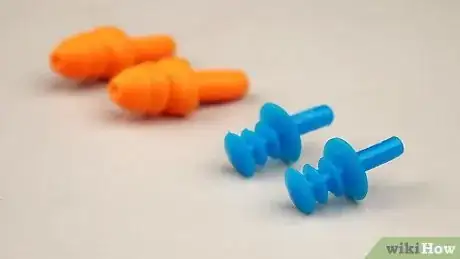

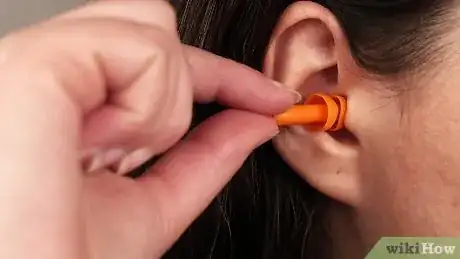
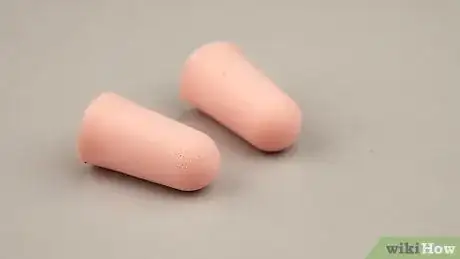

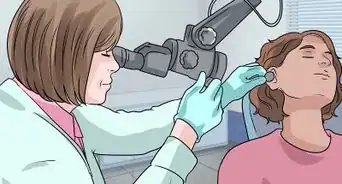

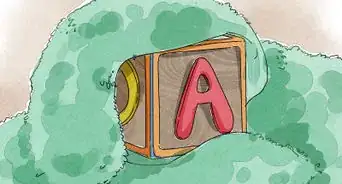
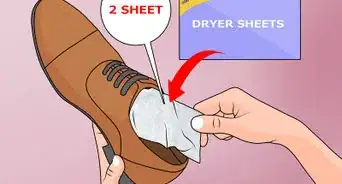
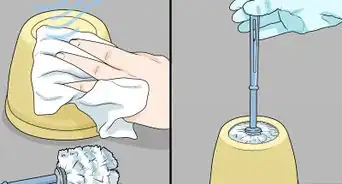
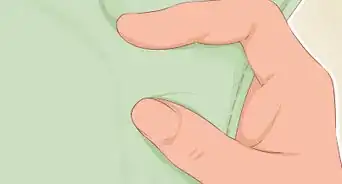



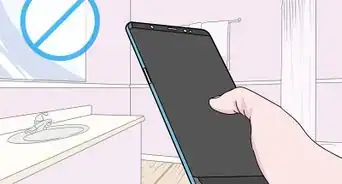








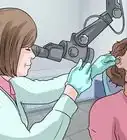

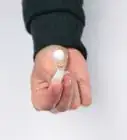




































Medical Disclaimer
The content of this article is not intended to be a substitute for professional medical advice, examination, diagnosis, or treatment. You should always contact your doctor or other qualified healthcare professional before starting, changing, or stopping any kind of health treatment.
Read More...